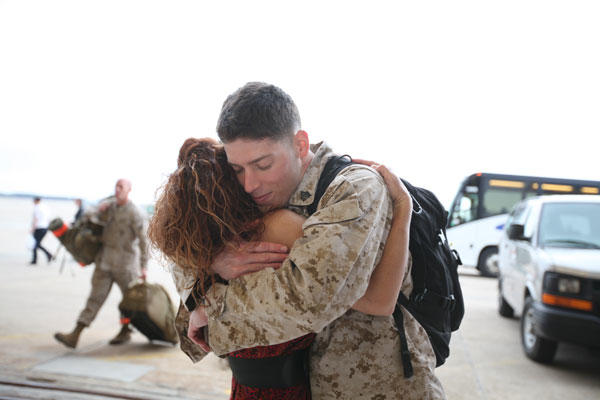VA provides several benefits to caregivers of some severely injured veterans.
A caregiver can be a parent, spouse, child, step-family member, extended family member, or an individual who lives with the veteran, but is not a family member who provides support to the veteran.
Who is Eligible to be a Caregiver?
Caregivers must be providing in-home care for veterans who suffered a qualifying injury either on or after Sep. 11, 2001 OR before May 5, 1975 and who have at least a 70% disability. The veteran must:
- have a serious injury – including traumatic brain injury, psychological trauma or other mental disorder.
- need of personal care services because of an inability to perform one or more activities of daily living and/or need supervision or protection based on symptoms or residuals of neurological impairment or injury.
The veteran must be enrolled in the VA healthcare program, and the injury must be service-connected.
How Much Does The VA Pay Veteran Caregivers?
VA bases stipend payments on the definition of “monthly stipend rate,” which means the Office of Personnel Management (OPM) General Schedule (GS) Annual Rate for Grade 4, Step 1, based on the locality pay area in which the eligible veteran resides, divided by 12.
The payments will vary based on the location where the veteran lives.
Check the current monthly GS pay table for location rates.
VA will pay different monthly amounts to caregivers of veterans who suffer from different levels of disability.
- Level 1 payments will be paid to caregivers of veterans who need substantial care but are more capable than the most disabled cohort;
- Level 2, payments will go to caregivers of veterans who cannot "self-sustain in the community," meaning they require continuous supervision and help with three or more daily activities.
Level 1 payments are 62.5% of the monthly stipend rate, level 2 payments are 100% of the monthly stipend rate.
For example: the annual wage for a GS-4 in Dallas, Texas, is $33,638: a level 1 caregiver there would receive approximately $1,751.98 monthly (33,638 x 62.5% / 12), a level 2 caregiver would receive approximately $2,803.17 monthly.
Those currently enrolled in the program and those with a pending application will be reassessed under the new eligibility criteria over the next year. If a reassessment results in an increased stipend, the veteran and their caregiver would receive the new amount, as well as a lump sum of retroactive pay back to Oct. 1, 2020. If the assessment determines the veteran is eligible for a decreased amount, the VA will give them notice by Oct. 2, 2021, and the decrease would go into effect "no earlier than 60 days" after they receive the notice.
For veterans who are currently enrolled but deemed during the reassessment to be ineligible under the new criteria, the VA will inform the veteran at or around Oct. 1, 2021, and their benefits would continue for 90 days following discharge from the program.
As part of the assessment, the VA will examine the level of activity veterans can do themselves each day, taking into account whether they can dress themselves, bathe, groom themselves, adjust a prosthetic or orthotic device on their own, go to the bathroom without assistance, feed themselves or need help moving around their homes.
The program will undergo another expansion on Oct. 1, 2022, to include combat veterans who served between 1975 and Sept. 11, 2001.
Services Available to Caregivers Through This Program
Caregivers of eligible veterans can receive:
- Monthly stipend
- Travel expenses (including lodging and per diem while accompanying veterans undergoing care)
- Access to health care insurance (if the caregiver is not already entitled to care or services under a health care plan)
- Mental health services and counseling
- Comprehensive VA Caregiver training provided by Easter Seals
- Respite care (not less than 30 days per year)
Visit the VA's caregiver page for more information, and to apply for these services.
Stay on Top of Your Military Benefits
Not sure what your veteran health care benefits are? Keep up with all the changes and details. Subscribe to Military.com. and get all the latest updates straight to your inbox.











